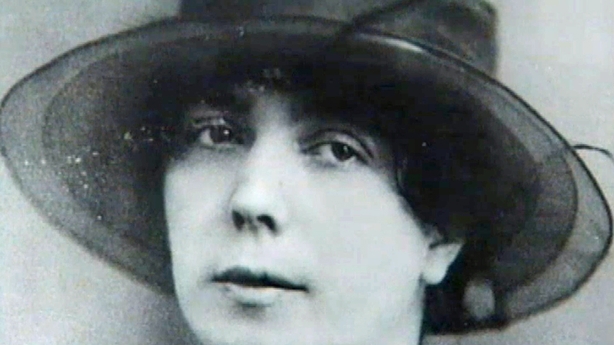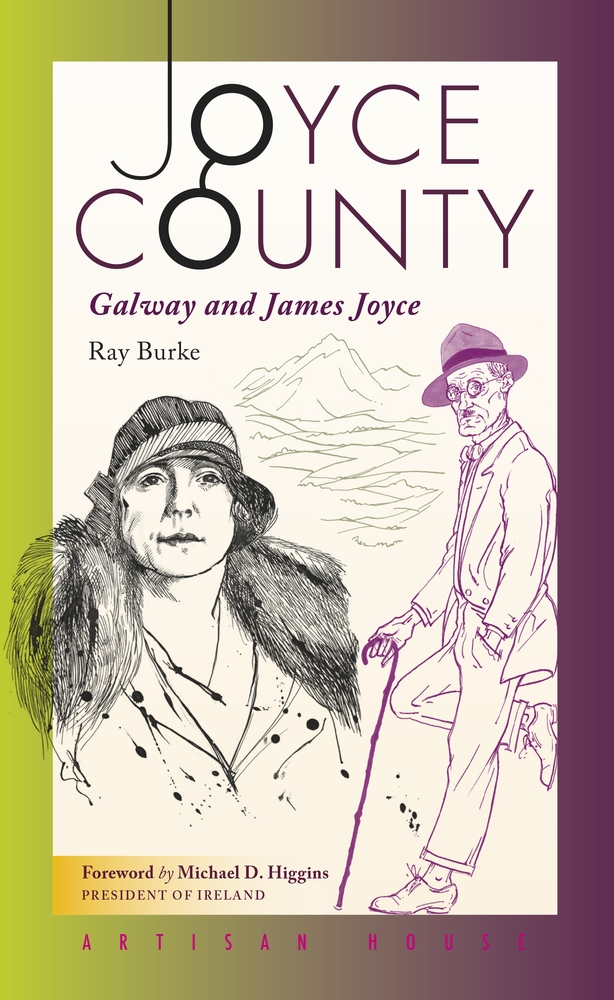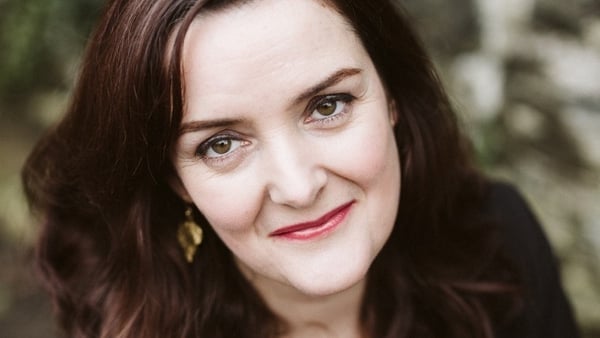Mary Ruddy of Connemara-based publishing company Artisan House introduces their new edition of author Ray Burke's acclaimed tome Joyce County, which explores the hitherto unsung connections between James Joyce and Galway, his relationship with his Galwegian wife Nora Barnacle and the West of Ireland's influence upon his work.
2022 marks both the 100th anniversary of the publication of Ulysses, in Paris, and the 140th anniversary of Joyce's birthday in Dublin. Joyce is rightly claimed by Dublin – it is the place he was born, was educated, and spent the formative years of his life. Indeed he famously boasted that if Dublin 'one day suddenly disappeared from the Earth it could be reconstructed out of my book [Ulysses]'.
The significance of Galway to Joyce might be a little more under the radar, but as Ray Burke’s book Joyce County reveals, Galway provided Joyce with not only his life companion, Nora Barnacle, but from her stories and way of speaking, and indeed letter-writing, she proved to be the inspiration for much of his writing.
Joyce was well aware of Nora's influential role
As President Michael D. Higgins writes in his foreword to Joyce County: ‘It was Nora, of course, who inspired several of his most memorable characters, including Gretta Conroy and Molly Bloom. It was also Nora’s doomed earlier love affair in Galway that formed the basis of the startlingly brilliant masterpiece ‘The Dead’, which is considered to be among the greatest short stories of the 20th century.’
One can only speculate as to how Joyce would have fared without Nora – her love, her support, her stories, her willingness to accompany him throughout the many ups and downs of his life. Harvard University literary historian Kevin Bermingham is in no doubt as to her pivotal role. In 2014, he wrote ‘Of all the people who made Ulysses possible, the most important is Nora Barnacle’.

Richard Ellmann, eminent Joyce biographer, agrees. He wrote ‘To set Ulysses on that date was Joyce’smost eloquent if indirect tribute to Nora, a recognition of the determining effect upon his life of his attachment to her’.
Joyce was well aware of Nora’s influential role and in a letter to her in 1909, he wrote ‘Everything that is noble and exalted and deep and true and moving in what I write comes, I believe, from you’.
Although Joyce visited Galway only twice, briefly in 1909 and for a longer period in 1912, it was a place that would leave a deep impact on his work and on the world of Irish literature. Amongst those connections highlighted in Burke’s book is Rahoon Cemetery – the imagined ‘lonely churchyard on the hill where Michael Furey lay buried’ – that Michael Bodkin, on whom Michael Furey is modelled, was laid to rest.
Then there is his poignant poem She Weeps Over Rahoon, where Joyce imagined standing with Nora mourning at the grave of Bodkin, ‘the dark rain falling, / Then as now’. This new edition of Joyce County contains a wonderful reproduction of that poem in Joyce’s own handwriting which commences with a decorative initial capital letter drawn by Lucia, daughter of James Joyce and Nora Barnacle. Joyce presented a limited edition facsimile to University College Galway in 1935, and they kindly permitted us to reproduce it.

The opening line of Ulysses – ‘Stately, plump Buck Mulligan’ – refers to Oliver St John Gogarty, a sometime Joyce friend who had very strong Galway connections, including proprietorship of Renvyle House Hotel in Connemara and Dunguaire Castle in Kinvara. Buck Mulligan features again, although not flatteringly, in several succeeding chapters, or episodes, as Joyce called them.
Gogarty and Joyce had an intense, but short-lived, friendship in the years before Joyce embarked on permanent exile from Ireland. Understandably, in later life Gogarty was less than pleased that the celebrity status conferred on him was derived from his place in Ulysses rather than from his own not insignificant talents and achievements. As well as being an eminent surgeon and an acclaimed poet, Gogarty was also a dramatist, an athlete, a statesman and a classical scholar.
Although Joyce visited Galway only twice, briefly in 1909 and for a longer period in 1912, it was a place that would leave a deep impact on his work
Ray Burke undertook extensive and original research on the grounding of the passenger ship Indian Empire in Galway Bay in 1858. This incident is referred to twice in Ulysses. The grounding was widely regarded as suspicious and Michael Healy, Nora’s uncle, with whom both Nora and Joyce maintained a close relationship, was a former Inspector of Customs and Receiver of Wrecks in Galway and would, no doubt, have been familiar with the grounding.
The date of the grounding would also have appealed to Joyce: 16 June.
Joyce would have known from Nora and her family that suspicions persisted in Galway that the grounded ship, the Indian Empire, had been deliberately steered onto the Margaretta Rock by two pilots hired in England in order to prevent Galway from becoming established as the major transatlantic port in Britain and Ireland. The pilots were arrested and charged, but one of them died suddenly while awaiting trial, fuelling the already-strong rumours that they had been bribed to scuttle the ship by people one Galway newspaper described as ‘certain Liverpool interests’.

Early in Ulysses, in Episode 2, the Dalkey schoolmaster Mr Garret Deasy mentions ‘the Liverpool ring which jockeyed the Galway harbour scheme’ in his litany of the wrongs suffered by Ireland. The incident is mentioned again in Episode 16 when the keeper of a late-night cabman’s shelter at Butt Bridge, near the Custom House, asks his customers aloud ‘why that ship ran bang against the only rock in Galway Bay when the Galway Harbour scheme was mooted…?’ The keeper adds: ‘Ask her captain … how much palm oil the British Government gave him for that day’s work.’
The Indian Empire grounding was certainly mysterious, and it damaged Galway’s prospects of becoming a major transatlantic seaport, causing innuendo to linger in Galway. But Joyce’s two references to it in Ulysses rely on the rumours as much as the facts.
The Indian Empire research conducted by Ray Burke, written about so eloquently and accessibly in Joyce County exemplifies the value and importance of this book and why it needs to be available to readers in this centenary year of Ulysses. Throughout the book there are many instances where Burke goes to great lengths to provide the back story to the comment or inference. It will without any question add greatly to a reader’s understanding and enjoyment of Joyce’s work. As a proud Oranmore man, Ray Burke unapologetically manages to shoehorn six references to Oranmore into the book!
As publishers of this new edition of Joyce County, we are proud to have ensured, with the support of Galway City Council, Galway County Council and Creative Ireland, that this illuminating book is back on the shelves of bookshops and available again.
Joyce County is available nationwide and online here.

